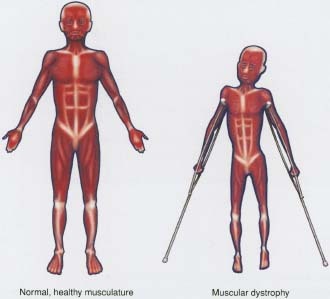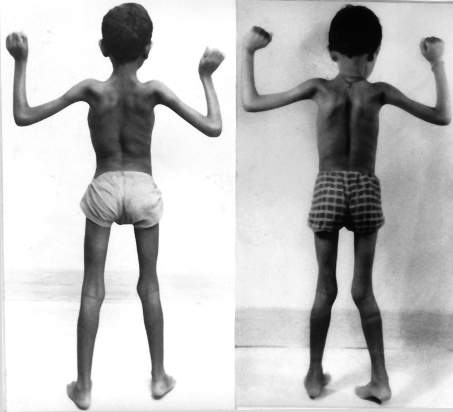Duchenne muscular dystrophy is one of the most common fatal inherited diseases diagnosed in childhood. Worldwide DMD affects approximately 1 in every 3,500 live male births. Because the Duchenne gene (Dystrophin) is found on the X-chromosome, it primarily affects boys; (see 'what causes DMD?') however, it is equally prevalent across all races and cultures. Despite DMD being present from the time of conception, symptoms of the disease often won't appear until a child is between two and five years old. The most significant and recogniseable symptom of DMD is progressive muscle weakness and degradation. Initially, weakness is evident in large muscles (eg legs) and eventually progresses to small muscles (eg hands). As the disease progresses further it begins to affect breathing and heart muscle (see 'Clinical features'). Boys on average lose their ability to walk at approximately 10 years of age and die of breathing or heart complications by their mid-twenties.
|  Figure 2: Childs musculature with and without DMD at same age
 Figure 3: Children with Duchenne Muscular Dystrophy
|
